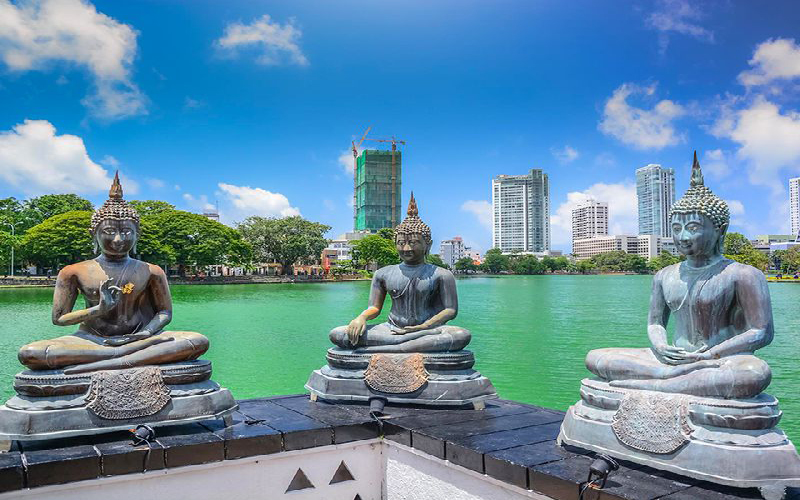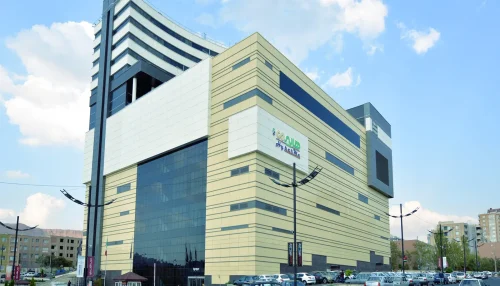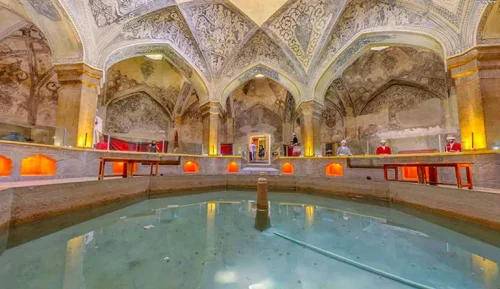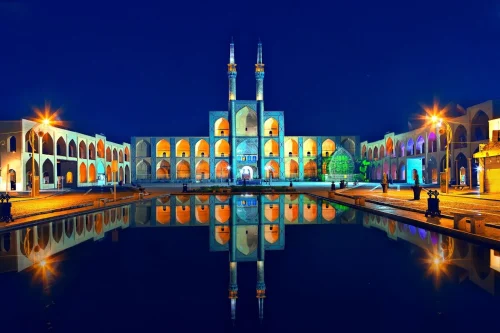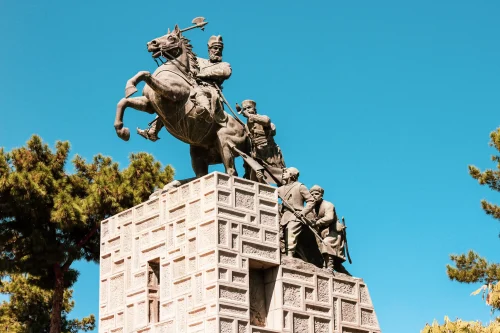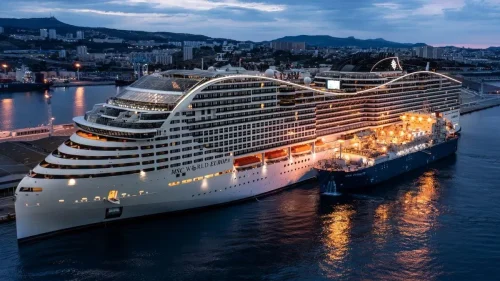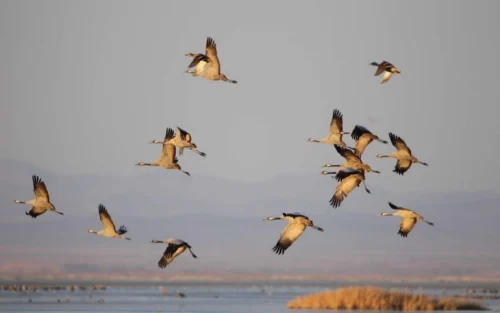Spiritual Tourism: Visiting the Gangaramaya Temple, the Heart of Colombo, Sri Lanka
The Gangaramaya Temple in Colombo, the heart of Sri Lanka, is a prominent spiritual tourist attraction that draws thousands of visitors from around the globe each year. This temple, with its intricate and beautiful architecture, not only offers a serene atmosphere but also symbolizes the Sri Lankan people’s commitment to Buddhism. Visiting this temple provides a unique experience of Sri Lanka’s history and culture, offering an ideal opportunity for those seeking a spiritual and enriching journey.
If you are planning a spiritual journey to Sri Lanka, Spiritual Tourism: Visiting the Gangaramaya Temple, the Heart of Colombo, Sri Lanka can be an excellent choice. This trip not only allows you to learn about Sri Lanka’s rich history and culture but also provides an opportunity for spiritual relaxation and meditation. The Gangaramaya Temple, with its fascinating sculptures and various sections, is an ideal place for contemplation and reflection. With the professional team at Iran Charter, you can enjoy unparalleled services and meticulously planned visits to this sacred site.
A Spiritual Journey to the Gangaramaya Temple Complex in Colombo
Visiting the Gangaramaya Temple: A Spiritual Experience in Colombo, Sri Lanka
Spiritual Tourism in the Heart of Colombo: Gangaramaya Temple, Sri Lanka
History of Gangaramaya Temple and its Spiritual Significance
Gangaramaya Temple in Colombo, the heart of Sri Lanka, boasts a rich and meaningful history that dates back to different periods of the past. The temple was founded in the late 19th century by Hikkaduwe Sri Sumangala Nayaka Thera and has since become one of the most important spiritual centers of Buddhism in Sri Lanka. The spiritual significance of Gangaramaya Temple is not only in its connection with Buddhist teachings but also in its role as a place for gathering and worship for both locals and tourists from around the world. This sacred place reflects the commitment and love of the Sri Lankan people for Buddhism and is known as the spiritual heart of Colombo.
Unique Architecture and Design of Gangaramaya Temple
The architecture of Gangaramaya Temple is a blend of various Asian and local architectural styles, turning it into a masterpiece of art. Styles from Sri Lanka, India, Thailand, and China have been utilized in this temple’s structures, resulting in complex and beautiful designs. Stone pillars with intricate carvings, elaborate ceilings, and delicate details are notable architectural features. In addition to visual beauty, the interior design of the temple provides a tranquil space for meditation and worship, adding to its spiritual allure.
Various Sections and Attractions of Gangaramaya Temple
Gangaramaya Temple consists of six main sections, each with its own special features and attractions. The central section houses a giant Buddha statue, symbolizing peace and tranquility. The monk gathering hall is a spiritual retreat for local monks. The temple’s museum is filled with valuable artifacts and beautiful statues showcasing Buddhist history and art. The temple library offers a place for studying and teaching Buddhist customs. The people’s gift section provides a space where tourists can show their respect by donating items. Additionally, Seema Malaka, connected by floating bridges and located a few hundred meters away, offers a peaceful space for meditation and contemplation.
Religious Ceremonies and Festivals at Gangaramaya Temple
Gangaramaya Temple hosts various religious ceremonies and traditional Buddhist festivals, introducing visitors to the local culture and customs. One of the most important events held at this temple is the Navam Maha Perahera festival, celebrated in February. This festival, adorned with grand processions, traditional dancers, and decorated elephants, brings a special vibrancy to the temple. Additionally, monthly Poya ceremonies specific to Buddhists residing in Colombo are held at Gangaramaya Temple, offering a deep spiritual experience and commemorating Buddha’s memory.
Visitors’ Experiences at Gangaramaya Temple
Visiting the Gangaramaya Temple offers a unique spiritual experience for tourists. Many visitors speak of the peace and serenity of the environment, the stunning architecture, and the opportunities for meditation. Moreover, interacting with monks and participating in religious ceremonies provide a refreshing breath for the soul. Visitors can tour the temple’s museum and become acquainted with Buddhist history and art. Visiting Seema Malaka also provides an opportunity to enjoy the pristine nature and delightful tranquility by the Beira Lake.
Travel Guide to Gangaramaya Temple in Colombo
Planning a trip to Gangaramaya Temple requires precise knowledge of access points and available facilities. The best way to reach the temple is by using public transportation like buses and taxis. From Colombo International Airport, one can take a taxi or private transfer services to the temple. Furthermore, the temple’s location next to Gangaramaya Park and Beira Lake makes it an easy-to-find spot. It’s advisable for visitors to coordinate with Iran Charter prior to their trip to take advantage of unparalleled services and precise planning.
Attractions Around Gangaramaya Temple
Gangaramaya Temple is situated in a beautiful historical district, surrounded by numerous tourist attractions, making it a complete destination for travelers. The National Museum of Colombo, Beira Lake, and the Dutch Museum of Colombo are among the places that can enhance your travel experience. The Galle Face Green Park and the Dehiwala Zoo are other nearby attractions worth visiting. Furthermore, Mount Lavinia Beach, with its beautiful scenery and numerous recreational facilities, is an excellent option for spending leisure time after visiting the temple.
Importance of Gangaramaya Temple in Sri Lankan Culture and Heritage
Gangaramaya Temple is not only a Buddhist sacred site but also an integral part of Sri Lankan culture and heritage. Combining art, architecture, and Buddhist teachings, it represents the splendor and grandeur of this religion across the country. The presence of Gangaramaya Temple in the heart of Colombo signifies the profound impact of Buddhism on Sri Lankan society and culture. This sacred site serves as a cultural and spiritual symbol, guiding people towards moral and spiritual values and plays a significant role in preserving and transmitting the country’s cultural heritage.
Key Tips for a Successful Visit to Gangaramaya Temple
A successful visit to Gangaramaya Temple requires adherence to some key points. Firstly, respect for local culture and customs should not be forgotten; wearing appropriate clothing and refraining from inappropriate behaviors are among these points. It’s better to visit early in the morning or late in the day to avoid direct sunlight and crowding. Bringing water and sunscreen is also recommended. Additionally, for a more complete experience, participating in one of the temple’s religious ceremonies can provide a deeper spiritual experience. Using the planned services offered by Iran Charter can also make the travel process easier and hassle-free.
Address and Access to Gangaramaya Temple
Gangaramaya Temple is located on Sri Jinarathana Road, Colombo, Sri Lanka. To access this temple, you can use a taxi or private transfer services from Colombo Airport. Additionally, public transportation like buses are also a suitable option for reaching the temple. The nearest bus station is Gangarama Station, from where it’s an easy walk to the temple. If you prefer, you can take advantage of the tourist tours offered by Iran Charter to visit your places hassle-free.
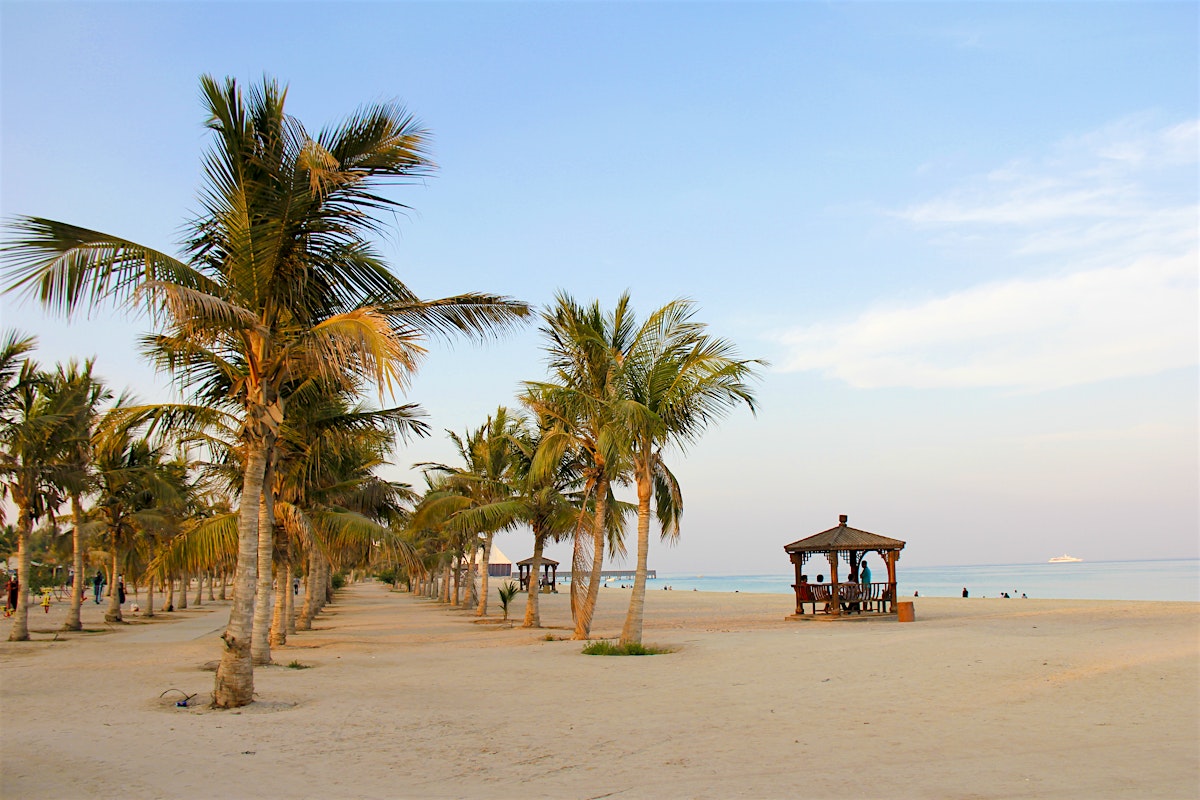
FAQ
- Where is Gangaramaya Temple located?
- Gangaramaya Temple is located in Colombo, the capital of Sri Lanka. It is situated near Beira Lake and on Sri Jinarathana Road.
- What is the history of the Gangaramaya Temple’s construction?
- The history of Gangaramaya Temple dates back to the year 1800 when Hikkaduwa, a popular Buddhist monk, decided to build a beautiful temple for Buddhist devotees to gather in Colombo.
- What is the architecture of Gangaramaya Temple like?
- The architecture of Gangaramaya Temple is a blend of Thai, Indian, Chinese, and Sri Lankan architectural styles. This combination of modern and traditional elements distinguishes the temple from other Buddhist temples.
- What are the different sections of Gangaramaya Temple?
- Gangaramaya Temple comprises six main sections: the main temple with a giant Buddha statue, monk gathering hall, residence for monks, temple museum, temple library, educational halls, and the people’s gift section.
- What ceremonies are held at Gangaramaya Temple?
- Every month, a ceremony called Poya is held at Gangaramaya Temple to commemorate Buddha. In February, the traditional Navam Maha Perahera festival is also held, honoring Buddha’s two disciples and serving as a thanksgiving for the rain.
- How can we access Gangaramaya Temple?
- To access Gangaramaya Temple, you can use Colombo City Center or opposite Gangaramaya Park located on Sri Jinarathana Road. The best option is to use public transportation, such as getting off at Gangaramaya bus stop.
- What are the attractions around Gangaramaya Temple?
- Attractions around Gangaramaya Temple include the National Museum of Colombo, Beira Lake, the Dutch Museum, Galle Face Green Park, Dehiwala Zoo, and Mount Lavinia Beach, all of which are worth visiting.
- What are the famous restaurants near Gangaramaya Temple?
- Near Gangaramaya Temple, there are many renowned restaurants such as Sri Chandra, Chiminiya, Hilton, Breeze, and Leaf Lotus, where you can try local Sri Lankan dishes like kottu, green jackfruit curry, or seafood crab.
- What are the visiting hours of Gangaramaya Temple?
- Visiting Gangaramaya Temple is possible every day from 6 AM to 10 PM.
- Is there a charge to visit Gangaramaya Temple?
- No, visiting Gangaramaya Temple is completely free. The monks believe that this place is for spiritual cleansing and do not charge tourists.
- What is the exact address of Gangaramaya Temple?
- The exact address of Gangaramaya Temple is Sri Jinarathana Road, Colombo.
- What is the best time to visit Gangaramaya Temple?
- The best time to visit Gangaramaya Temple is during the dry season, from December to April. Visiting in January and February is also attractive due to the Navam Maha Perahera festival.
- What dishes are recommended at the restaurants near Gangaramaya Temple?
- At the restaurants near Gangaramaya Temple, it is suggested to try local Sri Lankan dishes such as kottu roti, hoppers, string hoppers, pol sambol, dahl curry, vegetable roti, fish ambul thiyal, wattalapam, lamprais, and fruit platters.
- Are there educational facilities at Gangaramaya Temple?
- Yes, Gangaramaya Temple has educational halls to familiarize visitors with Buddhist traditions, allowing them to learn more about the Buddhist religion and culture.
- What types of statues are present at Gangaramaya Temple?
- Gangaramaya Temple houses various Buddha statues of different sizes and details. Numerous large and small Buddha statues can be seen in different sections of the temple.
- Are there any special cultural or religious events held at the temple?
- Yes, a monthly ceremony called Poya that commemorates Buddha is held. Additionally, in February, the Navam Maha Perahera festival, featuring traditional parades and dances, is celebrated.
- Are there accommodation facilities at Gangaramaya Temple?
- Yes, there are accommodations for monks at Gangaramaya Temple, allowing visitors to learn about their culture and daily life.
- Is there a section for people’s gifts at Gangaramaya Temple?
- Yes, Gangaramaya Temple has a people’s gift section where tourists can view and purchase antiques and interesting items.
- What unique features does Gangaramaya Temple have?
- Gangaramaya Temple stands out with its blend of various architectures, beautiful statues, and tranquil spots like Beira Lake, making it a unique attraction in Sri Lanka.
- What tips are there for visiting Gangaramaya Temple?
- For visiting Gangaramaya Temple, it is recommended to bring a camera, wear suitable attire, carry enough water, and respect local customs and traditions.

